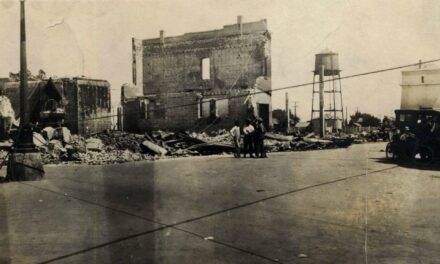In my previous articles, I explained how the Exchange Contractors traced its history back to the beginning of the development of the Central Valley and how this history can be seen locally through their longstanding relationships with City of Los Banos, its member entity, Central California Irrigation District (CCID), and its predecessor, the San Joaquin and Kings River Canal Company. We explained how water for the city originally came from the Main Canal and eventually was transitioned to well water by the early 1950’s.
As the City of Los Banos expanded, its need for groundwater gradually increased. It became evident that during the 1989 through 1994 drought, when CCID’s groundwater pumping was also at its maximum, the two agencies would greatly benefit from joint groundwater studies and thus the development of a sustainable groundwater management plan was initiated. In 1989, the city and CCID hired Dr. Kenneth Schmidt to conduct the first joint groundwater study of the aquifers in the Los Banos area. Dr. Schmidt also conducted groundwater studies for the remainder of the Exchange Contractors’ service area, including the areas in and near Mendota, Firebaugh, Dos Palos, Gustine and Newman, all of which are considered Disadvantaged Communities by the State of California. As a result of those cooperative studies, our area already had the basis for groundwater management plans when the State of California first required them in the mid-1990’s.
Even as water supply reliability has declined, CCID and the Exchange Contractors have managed their groundwater in such a way as to maintain supply for communities in the service area. The distribution and use of water by the Exchange Contractors resupplies the groundwater within our area which subsequently flows through the underground aquifers into city wells. However, groundwater supplies in our area rely on the stability and reliability of the surface water supplies delivered to the Exchange Contractors. As previously highlighted, the state and federal water systems in California are in a dire condition threatening water supplies locally and throughout the state.
Also, the recently passed legislation known as the California Sustainable Groundwater Management Act will cause impacts to both the Exchange Contractors and the surrounding cities and will necessitate more intensive groundwater management and cooperation into the future. According to the law, each of the agencies need to make progress toward sustainability which, among other things, requires having a “groundwater balance” by the year 2040. “Groundwater balance” means recharging as much water as is being pumped out in each service area. Accordingly, we have jointly developed and submitted a Groundwater Sustainability Plan to the Department of Water Resources for their consideration and approval. The plan identifies the current groundwater balance within each of the cities. Some cities are currently in groundwater balance but won’t be in the future if the city grows significantly. Other cities are currently out of balance and need to take steps to correct the situation.
With these realities, the Exchange Contractors and the cities are developing local projects focusing on providing dry year reliability for the Exchange Contactors and the region and groundwater balances for the cities. The projects are identified in the groundwater plan, and it will be vital for our future water supply that these projects be completed. The Exchange Contractors are committed to continue to assist the cities wherever possible, especially in completing their necessary projects. Our water supply’s future will depend on the long-term relationship and cooperation between the Exchange Contactors and the cities.

